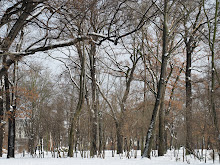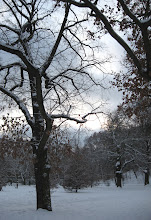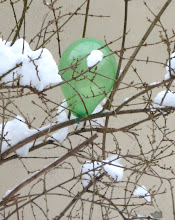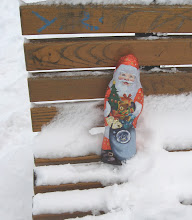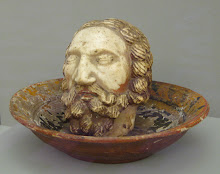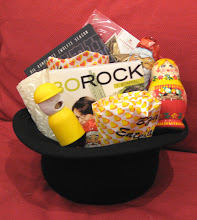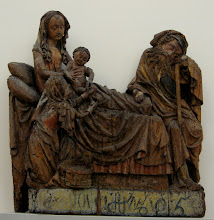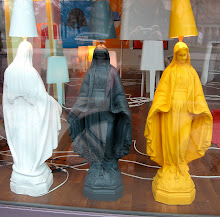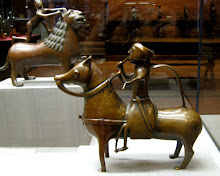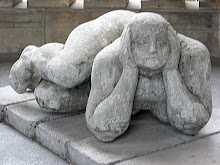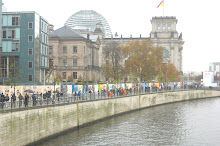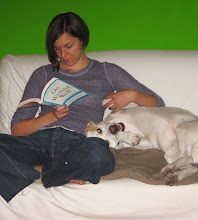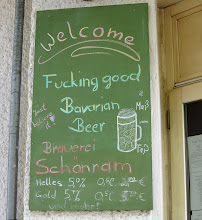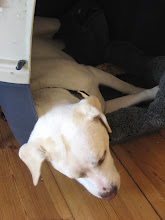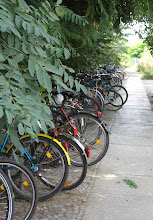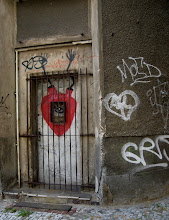I've said before that it is startling to find myself, an American child of the Cold War, living happily not only in Germany, not only in Berlin, but in east Berlin, place of the double-whammy: from Nazi to Soviet, and that's only going back a war or two. Never mind the mess the Kaiser made.
Although we never talked about the War at home, we did know that my father had lost his three best friends to the Germans, and culturally I was raised with the still-fairly-fresh war stories of those who did talk about it, and write about it, and put it on television. Even cartoons had their mad scientist characters with sinister German accents and white lab coats. I learned to think of the Germans as the evil race, bloodthirsty Nazis all, with harsh accents and harsher faces, goose-stepping and heiling through so many of the movies of my younger years. Judging by the number of mind-numbing war-movie dates I went on in high school, at least the boys I grew up with had an insatiable voyeuristic appetite for this recent and ghastly past. In addition to the Hollywood spin, at some point in high school I heard part of a transcription of graphic testimony from the Nuremburg trials that gave me nightmares for years. We moved into Viet Nam, but The War never went away. In my thirties it revisited my consciousness as Herman Wouk's extraordinary books "The Winds of War" and "War and Remembrance," then the mini-series.
(My own maternal great-grandparents were both German, first-generation midwesterners in a tiny town in Illinois; they named their 8 children such American favorites as Ralph Waldo and James Blaine; there was also a Roy Valentine and a Cedric Montgomery; hardly a whiff of German. They even Americanized the family name from Schneider to Snyder. And of course their parents had had the good sense to emigrate long before any of this particular ugliness was in the works and were therefore exempt from the racial blame of the post-war decades.)
By the time I was in grade school, of course, the Russians had taken their place as the new menace in our collective psyche. The Cold War brought the ever-present threat of The Bomb, which was articulated for us every Wednesday noon by the testing of the air raid sirens and was also taken up - very profitably - in a whole new array of plotlines by film and television producers, the old German faces and accents blurring into the new ones of the Soviets. In 1961, when the Wall went up dividing Berlin, I was nine years old. I remember the stark black-and-white TV footage of the 11 o'clock news report my parents watched the night it was completed, but it was their fear and the grim atmosphere of our living room that was truly frightening. (The only other late-night news report that imprinted itself on my young brain was almost exactly a year later when Marilyn Monroe was found dead. And then of course, it was only about a year after that that JFK was shot and childhood was just over.) In the sixth grade we were made to watch documentary footage of Russian soldiers shooting people who fell into an open mass grave, probably something to do with the Russian Revolution so we could see just how vicious these people were. Why anyone thought this was appropriate for young schoolchildren I will never know. (Propaganda: Frighten early, and often.) More fodder for years of nightmares. Newsreels of Soviet arms parades were, of course, a staple at the movie theater. It was hard to grasp how we could have just been wartime allies, fighting the Nazis, with these people we now feared with every breath.
In early November, the day of the Wall-Fall celebration, I finally wandered through the Holocaust Memorial which sits behind the U.S. Embassy in what was the death strip between East and West. It is nearly 5 acres of sarcophagus-size concrete chunks of varying heights, laid out in a grid that tilts a bit to create an intended feeling of being off-balance, a world gone awry. Designed by American (!) architect Peter Eisenman, it has the feel of a stark necropolis, a somber acknowledgment that Nazi Germany exterminated 6 million Jews. In spite of the optimistic view of a dear friend, who is inspired to play hide-and-seek in here and sees this as a positive legacy, I am inspired only to mourn.
At Thanksgiving, when my brother and sister-in-law were here, we visited the Berlin Wall Documentation Center which is near the Church of Reconciliation - an 1894 structure that ended up in the wide no-man's-land between East and West, sealed off from its congregation, and finally razed by the Communists in 1985. The congregation got its property back after the Wall came down and put up a new chapel. Across the street, facing the longest remaining segment of the Wall, is the Documentation Center, which houses a permanent exhibition (which we did not explore) and a viewing tower (which we did) that gives you perspective on just how wide the death strip was and how the Wall affected an individual neighborhood. We learned that the Wall was modified to prevent breaching by automotive vehicles through the addition of a long, sloping foot at the base. If a truck tried to ram its way through, the weight of the truck on this foot would prevent the wall from falling in the opposite direction. This memorial is still being developed, but there is a good outside display of the Wall's history and of the plans for the completion of the complex. I can only absorb so much of this stuff in one day (poor me); it is all so sad. It has taken me about three weeks just to complete this blog entry.
At Christmas I was invited to join the Berlin ice hockey team on a tour of one of the underground bunkers renovated during World War II as a public air-raid shelter. (Many of these had been constructed during WWI as protection against poison gas attacks.) Berlin's population in 1945 had not yet hit 3 million, but it was close; this bunker could only hold about 1,000 people during a raid, and probably was not even deep enough nor safe enough to be an effective shelter had it been hit. The walls are coated in phosphorescent paint (we were warned not to lick them) and still glow for a while when the lights are turned off and most of the original signs are still in place, pointing to the segregated bathrooms and to the Mothers-and-Children room. There's apparently even a birthing room, but we didn't see it. People sat on backless wooden benches in small rooms of 20-40 people, for 7 or 8 hours at a time, and when they were released, depending upon the success of the raid, they came out to streets strewn with body parts, dead children, obliterated homes. They learned to wear their fur coats, if they had them, and to bring all their papers and valuables with them in suitcases, and to sit on the suitcases. It was pitch dark once the paint stopped glowing and theft was easy and rampant.
(The War still intrudes here from time to time when pieces of unexploded ordnance are encountered by farmers, construction workers, and survey crews. In 1997 a bomb went off in the neighborhood I now live in, killing 3 people. Just a few weeks ago a 500-kilo bomb, discovered near Bremen, was safely moved to a "detonation area" after 8,500 people were evacuated. It's estimated that about 20 tons of the stuff is still found each year - bombs, mines, grenades which sank into the soft German soil.)
When the Soviets moved in after the war, things did not go well for the Easterners, especially for the women. In addition to the 6 million Jews, the Nazis had also killed 12 million Russians. The Russians pulled their soldiers from wherever they could find young men, many of them young, uneducated boys from the vast rural countryside, coerced into service with guns at their heads. Needless to say, when they got their piece of Germany they were in a very vengeful frame of mind. They systematically raped at least 90% of the women here, many of them multiple times, for years. And yet, when things settled down, the women in the socialist system encountered a more equal distribution of labor. Yes, they may have had crummy government jobs - that's about all there was after all the industry moved out of Berlin - but they had as many jobs as their male counterparts. And the men helped with the housework and childcare, an ethic that looks to be still firmly in place, judging by the number of men I see pushing baby strollers and playing with their children in the park every day. I find it an interesting statistic that one in eight Germans - Westerners and Easterners alike - would prefer to go back to the old segregated system.
Now I have done my duty to myself by recording all this. I will happily go back to the art museums this week.
Saturday, January 16, 2010
Subscribe to:
Comments (Atom)

